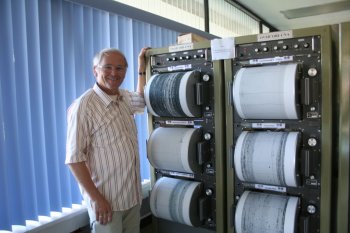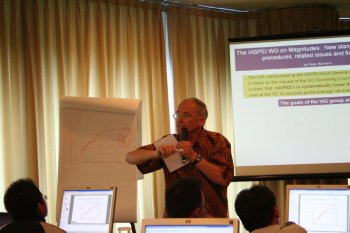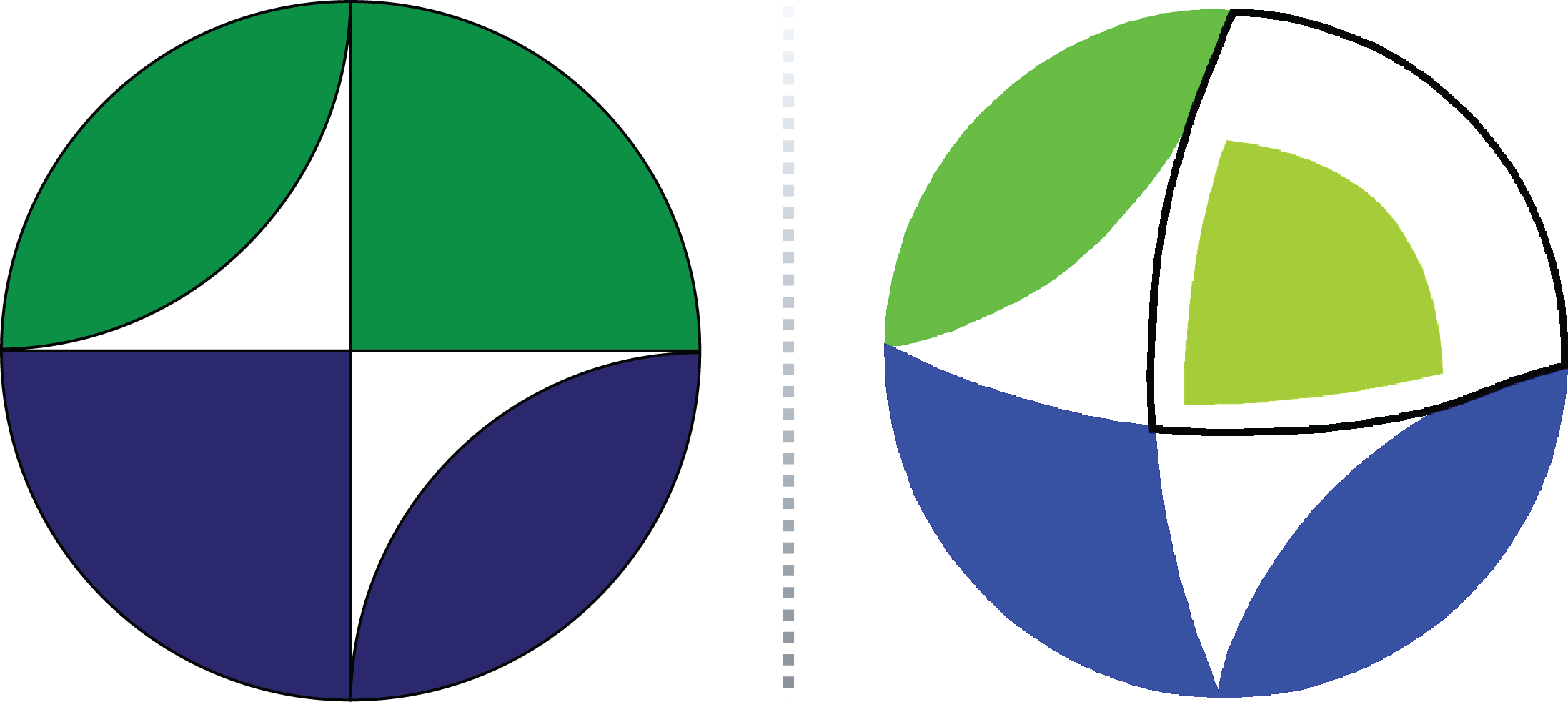Peter Bormann (1939 - 2015)
 On 11 February 2015, Prof. Dr. Peter Bormann passed away at the age of 75 after a period of serious illness. Prof. Bormann was a highly esteemed colleague who worked as a geophysicist and seismologist over many decades and after his retirement in 2004.
On 11 February 2015, Prof. Dr. Peter Bormann passed away at the age of 75 after a period of serious illness. Prof. Bormann was a highly esteemed colleague who worked as a geophysicist and seismologist over many decades and after his retirement in 2004.
Since then he often said about himself "I am retired, but definitely not tired."
With Peter Bormann we are losing a most dedicated and excellent scientist who, with his whole personality gave a lifelong commitment to the development of seismology and the training of young scientists and who also rendered outstanding services to the international bodies and the scientific community. But he also found time for travelling, interested in people and in many fields of science, literature, art, and photography.
After his studies in geophysics in Freiberg/Saxony, Peter Bormann, worked, as a seismologist, at the Seismological Observatory Moxa near Jena and later took up employment at the Central Institute for Physics of the Earth of the Academy of Sciences of the German Democratic Republic in Potsdam. There he was responsible for the establishment and development of earthquake research, the realisation of international training courses as well as for the scientific planning of the GDR Antarctic Station Georg Forster. During this time Peter Bormann also worked at the United Nations for more than 2 years, fostering the use of Remote Sensing in developing countries. After reunification of Germany he since then worked at GFZ German Research Centre for Geosciences, where he received further worldwide recognition through the organization and execution of International Training Courses on Seismology and Seismic Hazard Assessment -- these courses are still continued today.
These courses that were led by Prof. Bormann with his profound knowledge of seismology, his fascinating dedication to the cause and his unique ability to impart knowledge have been invaluable and a great support for the further education and professional career development of generations of seismologists particularly in developing areas.

Again, under the leadership of Peter Bormann, the IASPEI „New Manual of Observatory Practice (NMSOP)", a textbook for seismological observatories worldwide, came into being. It was translated completely into Chinese and partly into several other languages such as Bahsa Indonesia, Russian and Turkish. Already seriously sick, Peter spent most of his time during the last years with editing, rewriting and producing a second, totally revised and enlarged edition of the manual. It is worth mentioning that without his constant perseverance neither of these editions would ever have become reality. The Manual holds internationally as one of the most important books for the education of seismologists.
In addition, Peter Bormann wrote a considerably large number of international publications. He became known worldwide for his interest in the determination of earthquake magnitudes. Many colleagues will not forget his enthusiasm, unwavering attention to detail and his lively spirit during discussions about different magnitude scales and measuring practices. As chairman of the IASPEI Working Group on Magnitude Measurements he played a key role in developing new measuring routines, which were adopted by IASPEI as a new standard. Even as professor emeritus, he made several essential contributions, for example to the fast and precise determination of the magnitude of strong earthquakes. This procedure constitutes a breakthrough in Tsunami Early Warning.
We will cherish fond memories of our colleague Peter Bormann and his scientific legacy.
Jochen Zschau, Birger Lühr, Claus Milkereit, Johannes Schweitzer, Torsten Dahm, Albrecht Schulze, Rainer Kind
